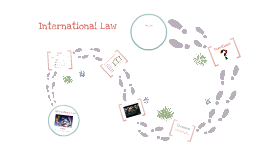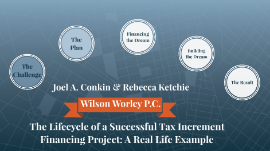Law Template
Transcript: Joel A. Conkin & Rebecca Ketchie The Lifecycle of a Successful Tax Increment Financing Project: A Real Life Example Wilson Worley P.C. Kingsport Mall, circa 2002 The Challenge Generating Property Tax Revenue of $63,705.00 Many challenges with the site Redevelopment District The Plan Different tools available Payments in Lieu of Taxes Business Improvement Districts Tax Increment Financing Industrial Development Board Tax Increment Financing Housing Authority Declare area "blighted." Adopt a Redevelopment Plan Studies, studies, studies! Housing Authority Site plan proposals Financing the Dream Financing the Dream Timing of repayment Shortfall of increments to cover bond payments Poor use choices after development Tax assessment challenges Risks What were the risks? $2,474,067 in bonds Originally at 7.32% Started in 2006, but first payment due in 2007 Payments of $384,066/year, secured by tax increment Restrictive covenants on land Terms What were the terms? Tax Increments Where did the financing come from? Property Values Increase Base Value is Set Property Tax is Collected Increment is Allocated The Details Building the Dream Building the Dream What did the money buy? As of 2017, the combined city and county taxes on the same property were $550,552.90 (from $69,440 in 2005). The TIF bonds were paid off in 2015, six years ahead of schedule. All the tax revenue going forward goes to the city and county. The development continues to thrive, generating not only property tax, but increased sales tax. The greenbelt area is an asset. Neighboring properties have since revitalized. The Result The Result Contact Info

















